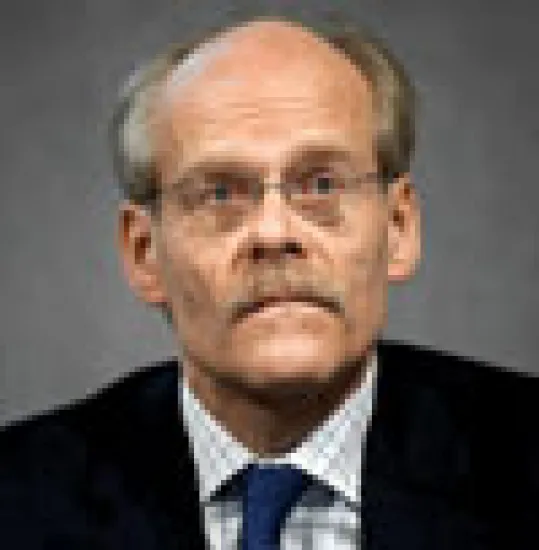As central bankers around the world engage in unprecedented activism in a bid to stave off financial collapse, many are turning to Stefan Ingves for his unique perspective. Ingves, the governor of Swedish central bank Sveriges Riksbank, played a critical role in resolving the country’s banking crisis as head of the Swedish Bank Support Authority in the early 1990s, overseeing an $8.3 billion bailout after a property market collapse. Restoring confidence is the key, he notes — Sweden guaranteed bank deposits in the 1990s, as most European countries have done recently. But success isn’t quick or easy. “To break a window takes seconds,” he notes. “To put the pieces together takes much longer.” Ingves has been doing his bit for confidence recently: Late last month the Riksbank slashed its key short-term rate by 50 basis points, to 3.75 percent. He spoke with Institutional Investor International Editor Tom Buerkle, in late October.
1 Institutional Investor: How does the current financial collapse resemble Sweden’s banking crisis?
Ingves: When it comes to this thing going on in various parts of the world, we’re talking about a different situation. What happened in Sweden in the early ’90s was something produced at home. We focused on domestic credit losses that absorbed the capital available in one form or the other, so the banks had to be recapitalized.
Now it's different. In countries where the banks have looked pretty much okay, the problem of liquidity and markets drying up and ability to borrow is a major issue.
2 This crisis began in the U.S., starting with subprime mortgages. Why has it taken such a big toll on European banks?
Already in the early ’90s we had a financial section that was globalizing. Swedish banks were substantially borrowing in the London market. Fifteen years later that evolutionary process has continued and new instruments have been added, so the interconnectedness is much stronger today. That means that whatever happens in one part of the world seems to be spreading in a way that is different compared with how it was 15 years ago. And in some countries in Europe, it comes to property markets and issues like that.
3 Do you think that capital injections are the solution?
Capital injections are part of the solution. But in addition to that, one has to figure out whether banks are viable going forward because if that is not the case, then the problem comes back after a while. So one also needs to focus on the bad assets and how to deal with them.
We also ended up reducing the number of savings banks, and all the farmers’ co-op banks eventually were turned into limited-liability banks. So we went through a very quick consolidation process.
4 When do you expect interbank funding to normalize, and do you think it will require further government intervention?
It's difficult to judge. What has happened, though, is that we now have toolboxes available to deal with these issues in a way that is quite different compared with six months ago, when mostly banks were dealt with on an ad hoc basis, one by one. The fact that we have moved from that stage to where we are today, and that it has been done on such a large scale, is something which is very, very promising. But to give specific time frames, that I’m not ready to do.
5 What role can monetary policy play in minimizing the economic fallout of the crisis?
We had good reasons to lower our interest rate because as far as we can judge, aggregate demand is falling, both in the world and here. At the same time, oil prices have come down substantially. Various kinds of raw materials seem to have peaked. The credit market issues will add to what is going on when it comes to where we are in the cycle.






